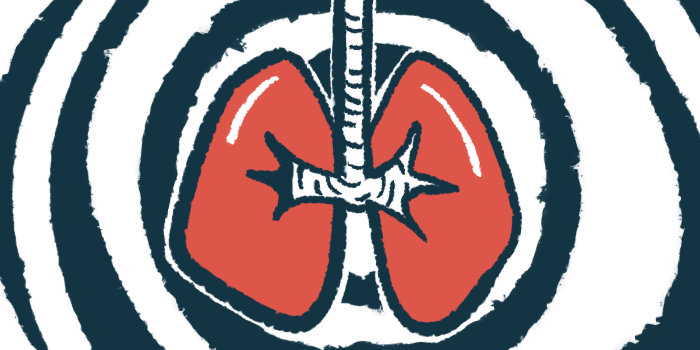#NACFC2022 – Kalydeco Gains Tied to Proteins in Wound Healing: Study
Differences in protein levels may impact efficacy of CF therapy

Differences in levels of proteins related to wound healing, cell migration and neurological development may influence whether or not people with cystic fibrosis (CF) experience improved lung function with Kalydeco (ivacaftor), according to a new analysis.
The analysis found that “differences in structural [lung tissue] remodeling and inflammation before therapy initiation may affect lung function response and diminish the full benefit of [Kalydeco] therapy.”
The results were presented at the recent 2022 North American Cystic Fibrosis Conference by Emily Skala, a research assistant at the Cincinnati Children’s Hospital Medical Center, in Ohio.
Her talk was titled “Proteomic analysis identifies physiological characteristics at baseline, one, and six months that segregate lung function response to ivacaftor.” The work was funded by the National Heart, Lung, and Blood Institute and the Cystic Fibrosis Foundation.
Investigating Kalydeco’s efficacy
Kalydeco is a CFTR potentiator that helps to “prop open” the gate-like CFTR protein. By doing so, it can improve the activity of this protein in people with CF caused by mutations — such as the G551D mutation — that interfere with this function.
An observational clinical trial called GOAL (NCT01521338) assessed outcomes for CF patients with gating mutations who started on Kalydeco. The results showed that Kalydeco treatment significantly reduced levels of chloride in participants’ sweat, which is indicative of better CFTR protein function.
On average, the treatment also significantly improved forced expiratory volume in one second (FEV1), a common measure of lung function. However, many patients who experienced a reduction in sweat chloride did not experience an accompanying improvement in FEV1.
That led scientists at Cincinnati Children’s and the University of Cincinnati College of Medicine to conduct an analysis of data from GOAL to investigate the reasons for this discrepancy.
The analysis included participants in GOAL who had a percent predicted FEV1 of 64% to 84% at the start of the trial, and who experienced a marked decrease in sweat chloride (60 to 80 mEq/L) after six months on Kalydeco.
Participants were divided into two groups: “responders,” who experienced an improvement of at least 5% in percent predicted FEV1 after six months on Kalydeco, and “non-responders” — those who did not see such an improvement in FEV1.
Blood samples were collected from participants at the start of the study (baseline), then again at one month and six months after starting Kalydeco. Among responders, there were 15 samples at baseline, 15 at month one, and 14 at month six. Among non-responders, there were 27 samples at baseline, 15 at month one, and 15 at month six.
With each of these samples, the researchers conducted proteomic analyses, or global assessments of the levels of all proteins. The team then looked for differences between responders and non-responders.
Nearly 3,000 proteins had levels that were different at baseline between responders and non-responders.
The analysis led the team to focus on key proteins “associated with wound healing and cell migration” as most impacting Kalydeco treatment.
At one month, the proteins whose levels were different between the two groups continued to be those involved in cell migration and inflammation, besides CFTR protein activation and neurological development.
As for earlier timepoints, proteins with altered levels at six months were related to cell migration and neurological development. Other processes identified were host viral response and female reproductive development.
In conclusion, “protein differences are detectable prior to the initiation of [Kalydeco] when comparing lung function non-responders and sustained responders, and it continues throughout 6 months,” Skala said.
As future work, Skala indicated a plan to expand the study population to assess lung function in response to different CFTR modulators.
Kalydeco is sold by Vertex Pharmaceuticals, which was not involved in this study.
Note: The Cystic Fibrosis News Today team is providing in-depth coverage of the 2022 North American Cystic Fibrosis Conference (NACFC) Nov. 3-5. Go here to see the latest stories from the conference.








